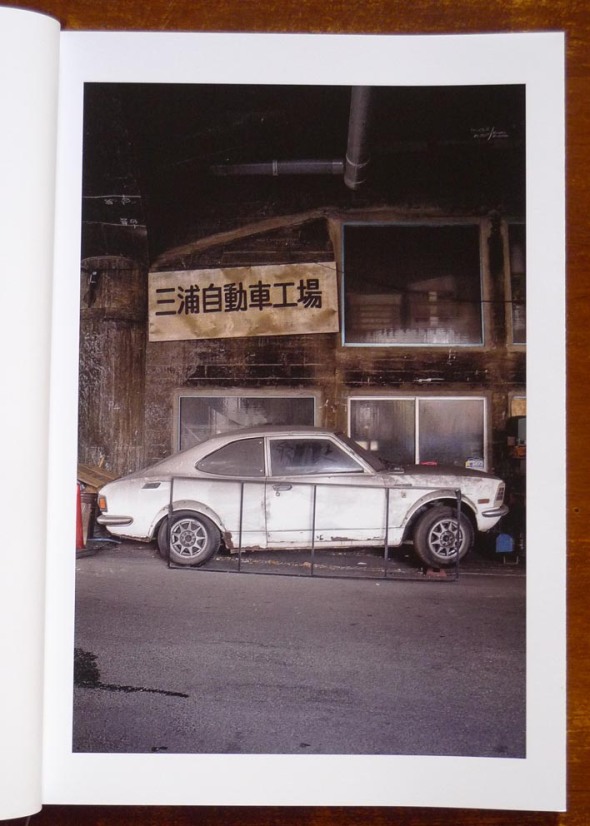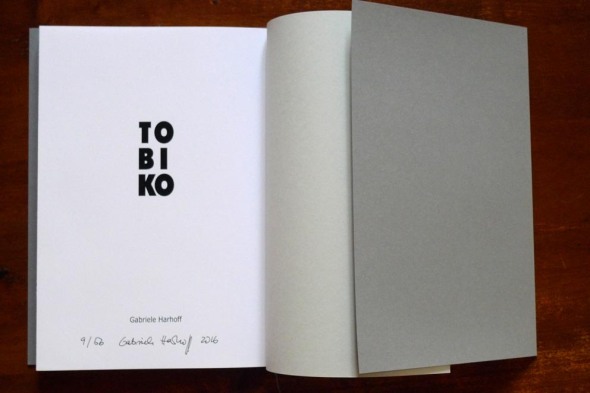Tobiko, by Gabriele Harhoff
Posted: February 7, 2016 | Author: christerek | Filed under: Photobooks, Uncategorized | Tags: Flying fish roe, Harhoff, Japan, Kyoto, Osaka, photobooks, Photography, Tobiko, Tokyo |1 CommentWhat a strange name that little word « Tobiko ». My first reaction was to googlize it : it means « flying fish roe », as mentioned in the back of the book. A food popular in Japan, especially for the production of sushi. But what is most amusing are the photos found associated with this word: small piles of eggs with incredible colors. Originally, the eggs are orange, but we find some green, flavored with wasabi, black, with squid ink, or orange-red tainted with soy. Well, it is a festival of color. And thus, knowing Gabriele, we understand the reason for the title of this book. Her first book was titled Pelikan, from the boxes of the famous brand of water painting for children. Let’s bet this one will also deal with color matters…



Gabriele is what can be called a colorist. The colorful pattern prevails over all other considerations. After a previous work in Thailand and Malaysia, she now, turns her camera to Japan where she realized the photographs for this book, mainly in Tokyo, Kyoto and Osaka. But what I especially appreciate in Gabriele’s work, is the delicacy and subtlety of her use of color. Her work remains delicate, as these little fish eggs. What stands out is both vibrant saturated colors and tranquility of desaturated monochrome, enhanced with a touch of light or shades of gray …




To guide us, Gabriele has added to her book a little map of the Tokyo subway. Entirely in Japanese, it is impossible for a foreigner to understand anything whatsoever! But it rather works as a color-code to help our moves. It uses the same colors that are in the photos and one wonders if it is possible to find a scheme, if this work would not be, finally a stroll through the streets of Tokyo, with for sole guide, not the language, but the color.




Gabriele manages remarkably well to give us back the atmosphere of the city. We see no monuments, no spectacular sights, but the everyday world of Tokyo inhabitants. Little things we see every day which gradually disappear from our eyes. Far from any anecdote, we walk the city aimlessly. Our attention is drawn to an object on a piece of wall. The city is petrified, it seems deserted and the only characters that are crosses stood still like statues, frozen in a pose that seems eternal. It is not known if they live in the city or have been left behind in a polite waiting in front of a pedestrian crossing, transforming themselves in a sort of urban furniture.


It should finally be noted that this book is beautifully handcrafted. The folds and binding are of a Japanese elegance. 56 copies only, then there will not be for everyone!
« Tobiko » is published in an edition of 56, signed and numbered. 31 x 23 cm, French fold, hand bound with Japanese stab binding, digitally printed on 150 g Profimatt.
More info : http://www.gabrieleharhoff.de/tobiko-book-2/
Read Gabriela’s review : https://gabrielacendoya.wordpress.com/2016/02/06/6-de-febrero-2016-tobiko-gabriele-harhoff/
[…] today on my friend Christer’s blog. And on Gabriela’s in […]